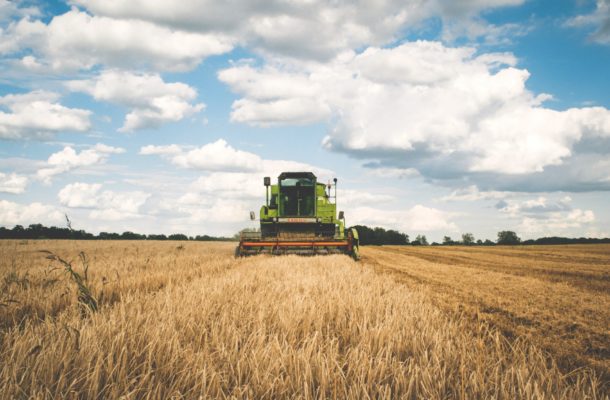Australian agribusiness law: sensible regulation, or red tape gone mad?

The topic of legislation is critically important to the future of agriculture in Australia. Is there a need for more or less regulation in the sector as we enter the third decade of the twenty first century?
There is a lot of talk about getting rid of regulation and red tape to reduce costs and help exporters’ compete in global markets. Given our trade exposure, this is sensible.
However, markets that are “unfettered” by regulation doesn’t always deliver good outcomes. The ACCC’s work in agriculture has identified that, in some industries, there are various systems and practices which reduce competition, and therefore impose long-term costs on the sector. In these instances, regulation can actually enhance the economic performance of a sector, rather than impose net costs.
I will discuss this in a little more detail later, however in addressing this topic I think it is useful to first consider what history has taught us.
The history of regulations governing agriculture in Australia highlights the ebb and flow of thinking about how best to enhance the performance of the sector from both an economic and social perspective.
My focus today is on market regulation, although I acknowledge that in the past two decades, environmental, biosecurity and animal welfare regulations have probably become much more of an issue for those involved in the agriculture sector.
The history of agricultural regulation in Australia
The early history of European agriculture in Australia involves repeated failures and near starvation for the first decade, followed by slow growth to meet domestic demand.
The early history of European agriculture in Australia involves repeated failures and near starvation for the first decade, followed by slow growth to meet domestic demand. The first exports were wool, grown by John and Elizabeth Macarthur at Parramatta, on land they essentially requisitioned for themselves.
It fair to say the Macarthurs were antagonistic towards the government of the day, strongly opposed to regulation, and ignored rules that didn’t suit them. Some might observe that many current-day farmers have similar characteristics!
Their pioneering success with wool-growing occurred despite the Government, rather than due to any help from the Government.
The subsequent rapid expansion of the wool industry over the first half of the nineteenth century followed a similar pattern, with squatters occupying land and building up flocks well in advance of government land regulations. In fact the first agricultural regulations implemented by governments in Australia involved attempts to control the ownership and use of land.
The rapid population increase that occurred during the 1850s due to the gold rushes was a major factor in the growth of agriculture in the second half of the nineteenth century, although this growth was severely checked by the economic recession and bank failures of the 1890s, followed by a major drought—the Federation Drought—which extended from 1895 to 1903.
The sector subsequently recovered and by the start of the First World War accounted for 30% of national GDP and more than 80% of Australian merchandise exports.
During the war there were considerable trade disruptions and export bans, including compulsory acquisition of the wool clip by the UK Government.
These measures were later removed, although by the 1920s Australian governments had introduced an increasingly complex system of tariffs and bounties to encourage the production of different commodities, to protect food processing and manufacturing, and to restrict competing imports.
These were stepped up during the worst years of the Great Depression to try and reduce unemployment. There was clearly a belief during this period that Government regulation and intervention could provide benefits for agriculture.
The onset of the Second World War in 1939 led Governments to impose stringent controls over agricultural exports, and the supply of inputs like superphosphate.
While some of these regulatory measures were dismantled after the war, others formed the basis of post-war statutory marketing arrangements and protectionist trade policies.
The champion of many of these policies was the leader of the Country Party for much of the Menzies Government, John McEwan. So much so, that policies favouring the protection of domestic industries through trade restrictions and subsidies came to be referred to as McEwanism.
The wool floor price scheme introduced in 1945 by the UK, Australian and South African Governments, and the Wheat Stabilisation plan of 1949, were the precursors of a burgeoning system of statutory marketing arrangements that were implemented by the Australian and State Governments over the four post-war decades, often in response to low commodity prices.
The approach of governments during this period was that the solution to any problem in the sector was increased intervention and regulation.
By the early 1990s, there were more than one hundred statutory agricultural marketing arrangements that had been enacted by governments in Australia.
While the specifics of each varied depending on the commodity involved, all were designed to improve farmers’ income, in part by protecting them from full exposure to competition and price risks in domestic and global markets.
The collapse of the Wool Reserve Price Scheme on February 11th, 1991, which left the industry with a stockpile of 4.7 million bales (exceeding a full year of production) and a debt of $2.8 billion ($5.1 billion in 2018 dollars) was really the harbinger of deregulation of agricultural markets in Australia, although it took over two decades and much debate and argument before the change was complete.
Agricultural policy reform
The starting point for the reforms can probably be traced back to Prime Minister Paul Keating’s “banana republic” speech in 1986, made in response to a recession associated with a slump in commodity prices and the Australian dollar. Keating introduced dramatic budgetary and microeconomic reforms and commissioned Professor Fred Hilmer to carry out a comprehensive review of legislation and regulations in the Australian economy. The report arising from this review was released in 1993.
Hilmer’s recommendations became what is known as Australia’s National Competition Policy. This policy encouraged the removal of any regulations that hindered competition and could not be demonstrated to deliver a net public benefit. Hilmer believed the resulting increase in competition would stimulate innovation and enhancing economic productivity.
All Australian governments signed on to these competition reforms in 1995 and commenced dismantling virtually all the agricultural statutory marketing arrangements as part of this economy-wide reform process.
In the agriculture sector, these reform processes commenced with the deregulation of the dairy industry in July 2000, and were essentially completed with the removal of the wheat single desk export regulations in July 2008.
In the intervening years, virtually every statutory agricultural marketing regulation was repealed, and the associated statutory organisations were disbanded. At present, the sole survivor of this era of agricultural market regulation is the NSW Rice Marketing Board.
Due to these reforms, Australian agricultural markets have been transformed from being relatively heavily regulated, into some of the least (if not the least) regulated agricultural markets in the world.
You only need to travel overseas to places like Canada, the USA, Europe and South America to observe the much greater level of agricultural market regulation and/or government interference evident in those agricultural sectors.
There are, of course, plenty of critics of the current situation in Australia. Some farmers demand a return to a more regulated marketing environment, media commentators criticise the ‘free markets and open trade’ business environment that characterises Australian agriculture, and some politicians are loud in their criticism current policy settings.
Debate on these issues tends to be very polarised, and often dumbed down to simple labels and slogans. There is an urgent need, in my view, to encourage more informed and considered debate on these issues, to avoid the risk of a pendulum-swing reversal in policy settings that will reduce agricultural competitiveness and productivity.
Of course, the starting point of any discussion should be the underlying economic principles. These were clearly spelled out in the Hilmer report, and I think it is worth revisiting a couple of quotes from that to reinforce what these principles are.
In that report, Hilmer explained:
“If Australia is to prosper as a nation, and maintain and improve living standards and opportunities for its people, it has no choice but to improve the productivity and international competitiveness of its firms and institutions.”
In his view, the best way to do this was by exposing more of the economy to competition, by removing regulation:
Competition provides the spur for businesses to improve their performance, develop new products and respond to changing circumstances. Competition offers the promise of lower prices and improved choice for consumers and greater efficiency, higher economic growth and increased employment opportunities for the economy as a whole.
However, the focus of his proposed reforms was not on deregulation per se, but on enhancing competition. As he explained:
The promotion of effective competition and the protection of the competitive process are generally consistent with maximising economic efficiency. However, there are some situations where unfettered competition is not consistent with economic efficiency. Examples of such “market failure” include situations where participants in a market have imperfect information about products, producers or suppliers, and the existence of so-called “natural monopolies” where a single firm can supply an entire market significantly more efficiently than two or more firms.
I think these three quotes neatly sum up the issues, for the nation as a whole and for the agriculture sector in particular.
To put it succinctly, to be successful and to generate profits and wealth, the agriculture sector needs to continually improve productivity and international competitiveness. The best way to achieve that is to expose agricultural businesses to competition, by removing unnecessary regulation.
However, in the event of market failure, regulation may be necessary to protect competitive processes or to prevent misuse of market power.
While for those present in the room today this may seem like stating the bleeding obvious, I think there is general lack of understanding of these principles, or perhaps a selective interpretation of them by some participants in the agriculture sector, and in the community more generally.
In the two decades since the deregulation of the agriculture sector in Australia there have been many changes, and certainly plenty of indicators that deregulation has indeed enhanced competition, and with it productivity, enabling the sector to grow.
The gross value of agricultural output in 2016–17 exceeded $60 billion, the value of agricultural exports was close to $50 billion in the same year, and the value of food exports was more than $40 billion—each being all-time records. Importantly, each of these reflected longer-term growth trends, rather than one-off events.
While deregulation of Australian agricultural markets is not the sole reason for these results, it has certainly been an important factor.
Critics of free market reforms will undoubtedly point to the continuing reduction in the number of farms, the decline in populations in regional towns, and the significant consolidation that has occurred in agribusiness and downstream markets like food retailing as a negative consequence of the reforms I referred to earlier.
While there is no doubt deregulation and free-markets have had some impact on farm numbers, I think it is instructive to look at the national agriculture sectors of other nations to better understand some of these issues.
It is interesting that the agriculture sectors of nations such as Canada, the USA and some areas of Europe have experienced the same trends in both farm numbers and agribusiness consolidation, despite the relatively high levels of regulation and government intervention in those agriculture sectors.
In reality, it seems that advances in mechanisation, telecommunications and transport are a large part of the reason for the above trends, rather than deregulation.
As I noted earlier, the key focus of the reforms that were implemented in agriculture over the past two decades was to increase the exposure of businesses to competition, and in doing so to increase productivity.
Generally speaking, deregulation was a key step in that process, although it was always recognised that in the case of market failures, regulation may be required to protect competition or to prevent the misuse of market power.
The role of the ACCC
The ACCC enforces the Australian Competition and Consumer Act 2010 and other legislation to promote competition and prevent the misuse of market power. Over the past two years it has had a particular focus on the agriculture sector.
Two matters we have dealt with in particular were the state of competition in beef markets, and in the dairy sector. In both instances, the ACCC undertook market studies, as the focus was on systematic issues that damaged or limited competition, rather than on specific breaches of the Act.
The recommendations arising from those studies have generated significant media coverage and industry debate, so I thought there might be some value in discussing those, especially in the context of debates about whether more regulation is needed in agriculture.
The market study of the cattle and beef market in Australia concluded that competition is generally quite strong in the sector, although there are a number of issues that could be addressed to improve the state of competition.
The first of these concerns over-the-hook sales, whereby cattle farmers sell cattle direct to processors. Our study identified that around 90% of slaughter cattle are sold in this manner, with price generally determined on the basis of a pricing grid, the weight of the carcase, and a grade that is assessed by the processor.
The concerns expressed by cattle producers were that the pricing grids are increasingly complex and difficult to obtain, interpret and compare; that some producers have a lack of confidence in the consistency of grading, and that processor feedback can be complex and makes price comparisons difficult.
The degree of concern cattle producers had about these issues varied by region and by market, but they have the potential to reduce competition for slaughter cattle, and disadvantage cattle producers trying to negotiate prices. This is compounded by the fact that the market reports available for over-the-hook sales rely on voluntary quotes provided by processors, rather than actual transactions.
The ACCC recommended that more resources be devoted to educating cattle producers about pricing grids and carcase grading; that market reporting for over-the-hooks transactions be upgraded and based on actual transactions; and that available technology be implemented by processors to provide objective carcase grading.
All these measures could assist in addressing the information asymmetry that exists between processors and cattle producers, and improve competition in the sector.
A second set of concerns arose about auction sales of cattle. These included that commission livestock buyers often act for multiple purchasers, and in doing so reduce competition. Complaints were also raised that livestock agents are known to act for both buyers and sellers simultaneously, and hence have a conflict of interest, often undisclosed to the vendor.
Both these practices have the potential to reduce competition in cattle markets.
Both commission buyers and livestock agents assured the ACCC that neither of these situations ever occur. However, in the course of our inquiry we obtained data from a number of auction sales, and analysis of this identified that both practices were relatively common.
It also became evident that a lack of consistent livestock agent licencing requirements across states meant that there are no available mechanisms for the industry to self-regulate to address these issues.
In response, the ACCC recommended that state governments adopt nationally standardised livestock agent licencing (creating the potential to deregister agents for unacceptable behaviour), and that buyers’ registers be established and displayed at saleyard auctions to increase the transparency of the auction process, in a similar manner that which occurs for real estate auctions.
There has subsequently been criticism from some industry representative organisations that these proposals are impractical and unnecessary, and would simply impose increased regulatory burdens on the industry.
The ACCC perspective is that these practices are likely to lessen competition in the market to the disadvantage of cattle producers; that the proposed remedies would impose little if any additional cost, and would ultimately help to protect the integrity and efficiency of cattle markets in Australia.
They would also provide an effective way to respond to instances of unacceptable practices that have the potential to damage the reputation of all involved in the industry.
In the case of the inquiry into the dairy industry, it was triggered by the actions of two large dairy processors in April 2016 which announced major reductions in the prices farmers received for their milk.
These actions highlighted the imbalances in bargaining power that have resulted in a disproportionate amount of supply chain risk being imposed on farmers, and the dampening of competition between processors arising from the nature of milk supply contracts.
The resulting industry crisis also brought to the fore ongoing concerns about the impact of major retailers’ milk pricing policies on the viability of the dairy industry.
The ACCC was commissioned by the Treasurer to conduct a detailed inquiry into these matters, and in doing so was granted powers to requisition information from industry participants under Section 95ZK of the Australian Competition and Consumer Act.
The ACCC obtained access to over 20,000 documents from processors and retailers, as well as detailed national sales information for the entire period from 2010 to the present. Forensic data analysis was carried out with a particular focus on the impact of $1 per litre milk on other participants in the supply chain.
Two main sets of findings arose from this inquiry. The first concerned the nature of contracting arrangements between dairy processors and farmers, and the effect of those on competition between milk processors for farmers’ milk.
The ACCC found that the nature of supply contracts between dairy processors and farmers, as a consequence of the dominant bargaining power of processors, results in an unfair share of risk being transferred to farmers.
What this meant in practice is that processors could advertise a season price to farmers at the start of the season, but then retrospectively drop that price late in the season for any reason, and in effect claw back money that had already been paid to farmers for their milk.
The ACCC also identified a range of different aspects of farmers supply contracts that had the potential to reduce competition between processors. These included:
- extremely complex pricing systems that made it very difficult to compare offers between processors or to know how much a farmer actually receives for their milk
- contractual agreements comprised of multiple documents that could be unilaterally altered at any time by processors,
- extended notice period requirements for farmers seeking to switch processors
- delayed announcements by processors of season milk prices – in some cases to the extent that season prices were only announced after the opportunity to switch processors had ended, and
- delayed loyalty payment arrangements that required a farmer to continue supplying well into a subsequent season before obtaining complete payment for the previous season.
In the wake of the 2016 dairy crisis, the dairy processing sector collectively agreed to a voluntary industry code of practice that required participating processors to remove many of these elements from their agreements and contracts.
The ACCC has subsequently examined contracts and supply agreements offered to dairy farmers in 2017, and concluded that there has been substantial improvements made to contracting practices.
However, not all processors have agreed to sign up to the voluntary code, some contracts and supply agreements still contain problematic terms, there is no dispute mechanism under the code, and there are no consequences if a signatory to the code subsequently breaches it.
The ACCC recommended that a mandatory dairy code be implemented to ensure that anti-competitive terms and practices are no longer imposed on dairy farmers by processors, and that appropriate mechanisms are available to administer the code and to resolve disputes.
We also made a number of recommendations about simplifying price offers and making it easier for dairy farmers to compare processor price offers and to switch processors.
On the issue of $1 per litre milk, the detailed analysis by the ACCC did not identify a direct impact on farmgate milk prices as a result of retailers adopting these policies.
There are two main reasons we reached this conclusion. The first is that an analysis of farmgate prices before and after the introduction of $1 milk does not show any significant change that could be attributed to this.
The second reason we reached this conclusion, and which also explains the lack of change in farmgate milk prices, is that the supply contracts between major dairy processors and retailers operate on a farmgate milk cost-plus basis.
What I mean by that is the contracts have pass-through mechanisms, whereby the price the processor paid for milk at the farmgate is passed through to the retailer, and the negotiated part of the contract price is the processors’ costs, as well as packaging and transport costs.
If the processor pays a higher price to secure the volume of milk needed, then under these contracts that additional cost is borne by the retailer, not the processor.
We concluded that the $1/litre milk price policies of major retailers are not predatory or otherwise anti-competitive, although recognising it is an arbitrary price that has declined significantly in real terms since 2011, and also that it is seen by dairy farmers as denigrating their work and effort.
In response to the ACCC recommendations for both the dairy and beef cattle sectors, there have been criticisms that they simply amount to more regulation of both sectors and impose additional costs.
These responses are not surprising, as there is a fairly strong culture in Australian agriculture opposed to regulation – no doubt a reaction against some of the worst regulatory excesses of McEwanism during the post-war years, perhaps even harking back to the attitudes of the Macarthurs!
However, the critical question we had to address in both situations was the state of competition in those markets. In both cases, it was apparent that competition is being undermined by imbalances in bargaining power and market information.
The potential consequences are that farmers will make less efficient production and investment decisions, and processors will compete less vigorously than is desirable. The competitiveness of both the dairy and beef sectors will suffer as a result, and that will cost sector participants and the nation as a whole.
The remedial measures recommended by the ACCC aim to address these competition deficiencies via ‘light-touch’ regulation will impose minimal if any additional costs on the respective sectors, and will improve the opportunities for both sectors to profitably expand in the future.
Where to from here?
In conclusion, I think it’s time that we reframe the debate on regulation in the Australian agriculture market.
Asking whether there needs to be fewer or more regulations misses the point entirely.
The critical issue is the state of competition in our agricultural markets, and in cases where competition is at risk, what needs to be done to address that.
The agriculture sector needs continual improvement in productivity to remain internationally competitive. The best way to achieve that is to expose farmers and agribusinesses to competition, and to adjust regulation as necessary to protect and maintain competition.
If we get this wrong, then farmers will be less productive, agribusiness competitiveness will suffer, and the nation as a whole will be worse off.
The cost of that could greatly exceed the cost of any regulation.
Commissioner Mick Keogh oversees the ACCC’s agriculture work program and chairs the ACCC’s Agriculture Board and Consultative Committee. He received the Order of Australia for services to agriculture in 2015.




